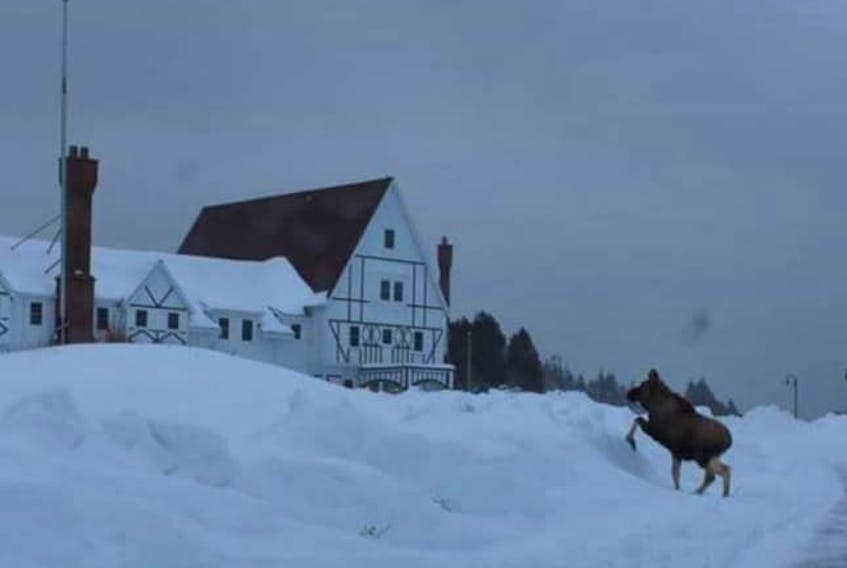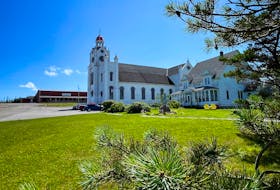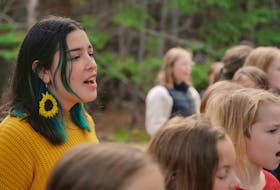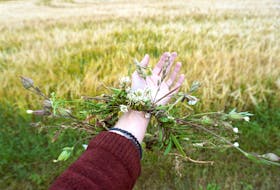There is nothing more iconic to the Cape Breton experience than the moose. This noble and majestic creature is part of many Cape Breton stories. The Cape Breton moose, however, has had a long and troubled history.
Moose were, and still are, key to the survival of the Mi’kmaq in Cape Breton. They hunted these animals in the winter where they could travel quickly on top of the snow with snowshoes, while the moose got bogged down. In the summer, they hunted moose in large groups. According to Mi’kmaq legend, as told by Clifford Paul in the Cape Breton Post, the people promised to hunt them with love in their hearts, to treat them with respect, to share with all those in need and to harvest all of its parts.
Prior to colonization, it is estimated that there were approximately 15,000 moose in Nova Scotia.
Moose were also a part of the fur trade. Julian Gwyn noted that in the 1700s, hundreds of thousands of beaver, moose and other skins were taken from the Maritimes. The Fortress of Louisbourg began importing moose furs or skins from Acadie-Nova Scotia. From 1740-1743, the fortress imported 800 moose hides.
After the fall of the fortress, the inhabitants of Nova Scotia continued to export moose hides. From 1776-1780, 454 moose hides were sent to Britain.
In 1789, witnesses reported that Cape Breton had seen an extraordinary slaughter of moose. “These animals became the objects of most destructive pursuit, merely for the sake of their hides. Their carcasses were left by the hundred along the coast, from St. Anne’s to Cape North ... ever since the commission of that indiscriminate massacre, the numbers of moose have been comparatively scanty.”
These American hunters killed moose for their skins, tallow and nose. The moose nose was apparently considered to be quite the delicacy. The carcasses that were left behind created such a smell and mess that this was where Meat Cove got its name.
In 1791, Macarmick reported that 6,000-8,000 moose are being killed each year in Cape Breton.

By the mid-1850s, moose in Cape Breton were assumed to be near extinction. In response, the government made hunting moose from February to August illegal in 1843 which included a hefty fine. This year also saw a proclamation against using snares on moose.
In 1862, the Nova Scotia government placed a limit on the number of moose that were permitted to be killed by a hunting party. By 1874, the government placed a moratorium on killing both moose and beaver in an attempt to repair the damage done to the species.
The Fortress of Louisbourg recorded the trade of wolf pelts but it was around the mid-1800s that wolves disappeared from Cape Breton, possibly during the same over hunting cycles that the moose experienced. This extinction limited the number of predators that the moose had and should have increased their numbers. It was not until the 1970s that coyotes arrived in Cape Breton.
By 1924, moose in Cape Breton were as close to extinction as they had ever been. Added housing and land clearing destroyed their habitat and overhunting decimated their numbers. This situation was further aggravated by the arrival of a roundworm in the white-tailed deer population which soon infected the moose population further decimating their numbers.
In 1928 and 1929, seven moose were capture on the mainland and released in Inverness County. There are few records remaining of this repopulation attempt but it is fairly safe to assume it was unsuccessful. Moose hunting was completely closed in all of Nova Scotia in 1937 but these measures did little to slow the decline of the population, especially in Cape Breton.
In 1947 and 1948, a plan was hatched to bring 18 moose from Elk Island National Park in Alberta to be released in the Highlands national park. Elk Island had an over-abundance of moose at the time. The moose were transported to the island by rail. They were released in the summer after the winter ticks dropped off so they did not introduce these to Cape Breton. As a result of this repopulation with northern moose, the Cape Breton moose, Alces andersonii, is not the same subspecies as the moose that are found on the mainland.
This moose population stayed in the low hundreds until the Spruce Budworm outbreak when the population virtually exploded.
In June of 2019, the Department of Lands and Forestry found that the total number of moose in Cape Breton to be around 1,300. All of these are decedents from the original 18 moose from Alberta.
Vaness Childs Rolls is a local historian who lives in Sydney. Her column appears monthly in the Cape Breton Post. She can be contacted at [email protected].









